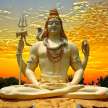
Throughout human history, ghosts have fascinated, terrified, and fascinated people in cultures all over the world. Some people strongly believe in their existence, citing personal experiences and centuries-old mythology, while others dismiss them as nothing more than figments of imagination. We explore the complex realm of ghosts in this piece, looking at its scientific explanations, psychological foundations, and cultural importance.
Cultural Viewpoints:
Ghosts have varied meanings and characteristics among cultures. Ghosts are frequently depicted in Western cultures as restless souls of the dead, haunting certain places or trying to settle unresolved matters. On the other hand, ghosts are seen as ancestral spirits with the capacity for both good and evil in Eastern civilizations like China and Japan.
In Hinduism, ghosts are thought to be souls caught in a never-ending cycle of rebirth because of unfinished business with previous lives. Similar to this, ghosts are viewed in Indigenous societies as ancestors keeping an eye on their offspring or as guardians of the land.
Interpretations in terms of psychology:
Psychologists explain ghost encounters in a variety of ways, relating them to psychological disorders including suggestion, pareidolia, and sleep paralysis. People who suffer from pareidolia—the inclination to find significant patterns in seemingly random stimuli—may mistake confusing sensory data for spectral images.
When someone has sleep paralysis, which is characterized by a brief paralysis upon awakening or falling asleep, they frequently experience intense hallucinations that they may perceive as visits from ghosts. Furthermore, suggestion—which is further supported by societal norms and media representations—can lead people to believe that commonplace events are supernatural.
Scientific Justifications:
Some occurrences remain unexplained by contemporary scientific understanding, despite the fact that many ghost sightings can be explained by psychological or environmental causes. Infrasound, electromagnetic fields, and environmental pollutants are frequently mentioned by paranormal investigators as possible reasons for alleged phantom experiences.
Furthermore, fascinating theories concerning the nature of consciousness and how it interacts with the physical world have been spurred by developments in quantum physics, opening up new possibilities for investigating the idea of life after death.
In summary:
Ghosts are an enduring phenomenon that fascinates and confounds people across cultural and geographic divides. Believers contend that strong proof for the presence of supernatural entities comes from personal experiences, while skeptics argue for psychological or scientific explanations.
In the end, it's still unclear if ghosts are a part of objective reality or are only perceived by humans. The mystique surrounding ghosts endures as our knowledge of the human mind and the cosmos expands, provoking us to reflect on the nature of life and the mysteries that lay beyond the curtain of the unknown.
When it comes to how they are viewed in other cultures and belief systems, ghosts are frequently divided into distinct sorts according to their traits, actions, and origins. The following are a few globally recognized categories of ghosts:
Ghosts known as residuals are said to be energy traces from previous experiences or feelings; they frequently reenact the same activities or show up in particular places unaware of their surroundings. Rather from being sentient beings, residual ghosts are believed to be more like a replay of a specific point in time.
Ghosts that exhibit environmental awareness and the ability to communicate with live people are referred to as intelligent or interactive ghosts. They could manipulate objects, answer questions, or communicate in a variety of ways including apparitions or EVP (Electronic Voice Phenomenon).
Poltergeists: The German word "poltergeist" means "noisy spirit". Chaotic and disruptive occurrences like flying objects, loud noises, and even violent attacks are linked to these creatures. Repressed emotions or psychological disorders in the afflicted area are frequently linked to poltergeist activity.
Apparitions: These are ghosts' visible manifestations; they frequently take the form of translucent or semi-transparent people. Apparitions can be full-bodied apparitions that resemble living people or hazy forms with no distinguishable features.
Shadow People: Generally speaking, shadow people are described as dark, humanoid forms lacking in facial characteristics and depth. Usually perceived as ephemeral shadows or silhouettes, they might occasionally evoke sensations of fear or anxiety. The nature and origins of shadow beings change with civilizations and ideologies.
Doppelgängers: According to legend, doppelgängers are spectral duplicates or precise replicas of real people. Meeting one's doppelgänger is frequently interpreted as a portent of death or bad luck.
Crisis Apparitions: It is thought that these ghosts appear to friends or family members just before or after they pass away, usually to offer consolation or a message. It has been stated that crisis apparitions appear during periods of trauma or emotional turmoil.
Haunted Objects: It is thought that some artifacts or objects are infused with ghostly energy, which causes haunting experiences. These items could be connected to sad occurrences, cursed, or purposefully imbued with spiritual energy via rituals.
Animal Ghosts: A number of cultures hold that departed animals, from cherished pets to legendary beasts, have ghostly incarnations. These animal ghosts can take the shape of ethereal beings or behave in ways that are similar to those of their living counterparts.
Elements: Elements are spiritual beings connected to the traditional elements of fire, air, water, and earth in esoteric belief systems. Sometimes people confuse these beings for the spirits of the dead, believing them to be natural energy manifestations.
These divisions are not all-inclusive and might overlap based on personal views and cultural interpretations. The variety of spectral phenomena is indicative of both the continuous curiosity with the supernatural and the vast tapestry of human experiences.






Comments
There are no comments for this story
Be the first to respond and start the conversation.